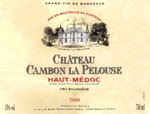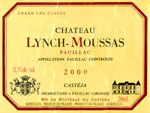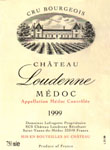|
Recent Articles |
|
|
|
Get
all the evaluations for
the April
Release National Post Weekly Wine & Spirits Columnist Saturday, March 29, 2003 I am watching Faking It
on The Life Channel, in which a devoted beer drinker and wine
know-nothing has to be transformed into a sommelier who can serve fine
wines to sophisticated patrons. He has trouble understanding all the
fuss about wine, especially the semantics and the prices. "How
could something made from grapes smell like grass, lemons or
peaches?" he wonders. And what about prices, could a single bottle
of Bordeaux be worth ten cases of beer? Finally, is older better? Wine fans are quick to
answer yes, yes and yes to all three questions. And yet when it comes to
prices and age I am not so sure. My professional guess is that perhaps
one-third of all expensive wines are not worth their price. This
wouldn't have been the case four decades ago when there were very few
dedicated wine lovers. Today, the ranks have swollen with moneyed
neophytes and the impact on prices has been dramatic. In the 1960’s, the
best bottle of Bordeaux would cost just over three times the price of
the worst. My 1962 Chateau Latour, for instance, was a mere $6.80 a
bottle when freshly purchased at the SAQ. Today, that ratio would be at
least 30 fold. And that, of course, is for brand-new Bordeaux. My
41-year-old Latour might fetch 200 times its original price. While prices are set by
demand and supply, the law of diminishing returns tells us that the fine
wine will not taste 30 times better than the ordinary. And it gets
worse. Fine wines are usually not very tasty in their youth and require
costly proper aging. There is, of course, the final risk that the wine
may not evolve as anticipated. Knowing when to drink
your treasurers is extremely problematic. Also keep in mind that while
these older wines have characteristics that make experienced fans jump
for joy, they may be repugnant to others. All of this came home to me
while addressing a fund-raising tasting of highly sought-after 1982
Bordeaux last year. To put it gently, by the time I got to sip the
prepoured glasses, there was nothing to sing about. They tasted tired,
even for a guy who likes mature reds. The fruit was dull and flavours
oxidized. The problem with these
'82s could have been bad shipping conditions, poor storage and/or just a
case of bad luck. Most devastating was letting mature wines sit in a
glass breathing itself to death for almost an hour. There are still
great 1982s out there. By contrast, this
year’s fund-raising focused on the initially less esteemed, but
sturdier, 1983s. Well, what a difference. These '83 Bordeaux were the
antithesis of last year's offerings - solid, still quite alive, packed
with fruit and very delicious. And so they should be with sky-high
prices. The question that one
must ask is whether it is worth getting into the fine wine buying-laying
away game at today’s prices. While it is tempting to sock away a few
bottles from say the highly esteemed 2000, which is reputed to be
sublime, there are many pitfalls to keep in mind.
Ironically, there are
always tasty, accessible, reasonably priced Bordeaux appearing on the
market. I remember the irreverent words of Kit Stevens, an English
Master of Wine, who would mutter in a very low voice, "When the
bride is beautiful why wait years to taste her?" Why indeed?
Check out the
| ||
|
Copyright Food & Beverage Testing Institute of Canada
2004 |

 From
recent tastings, let me recommend a gem from last week's Vintages
release:
From
recent tastings, let me recommend a gem from last week's Vintages
release:  Unfortunately,
most of the Vintages 2000 releases to date have been lackluster. From
the new arrivals, check out the chunky, chocolaty
Unfortunately,
most of the Vintages 2000 releases to date have been lackluster. From
the new arrivals, check out the chunky, chocolaty  Which
brings me to the one of best buy Bordeaux in years. It doesn’t hail
from a collector’s vintage, but the challenging 1999, which the Wine
Spectator awards 83 points suggesting that you “stick
to top estates; rest mediocre.” Don’t miss the wonderfully
accessible
Which
brings me to the one of best buy Bordeaux in years. It doesn’t hail
from a collector’s vintage, but the challenging 1999, which the Wine
Spectator awards 83 points suggesting that you “stick
to top estates; rest mediocre.” Don’t miss the wonderfully
accessible